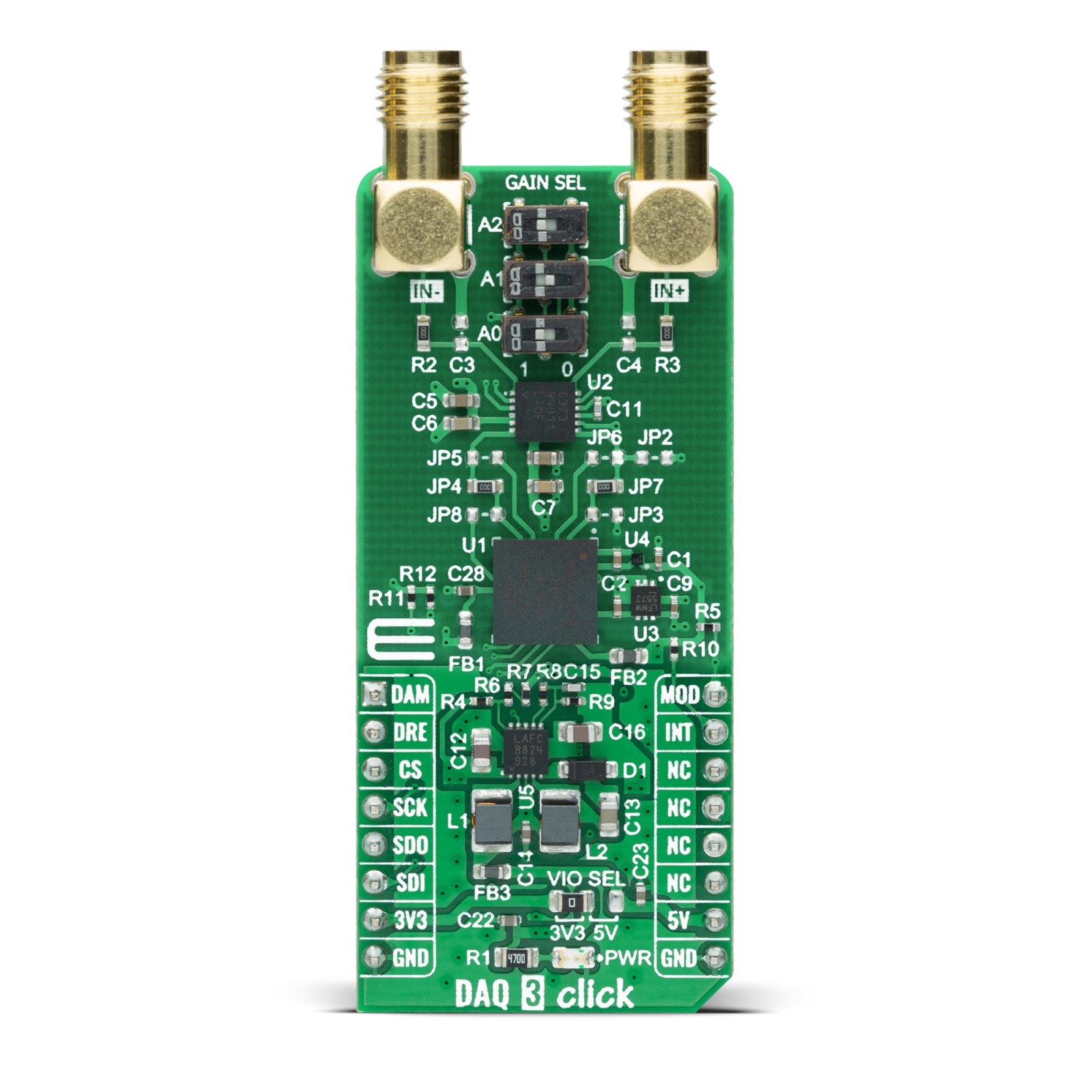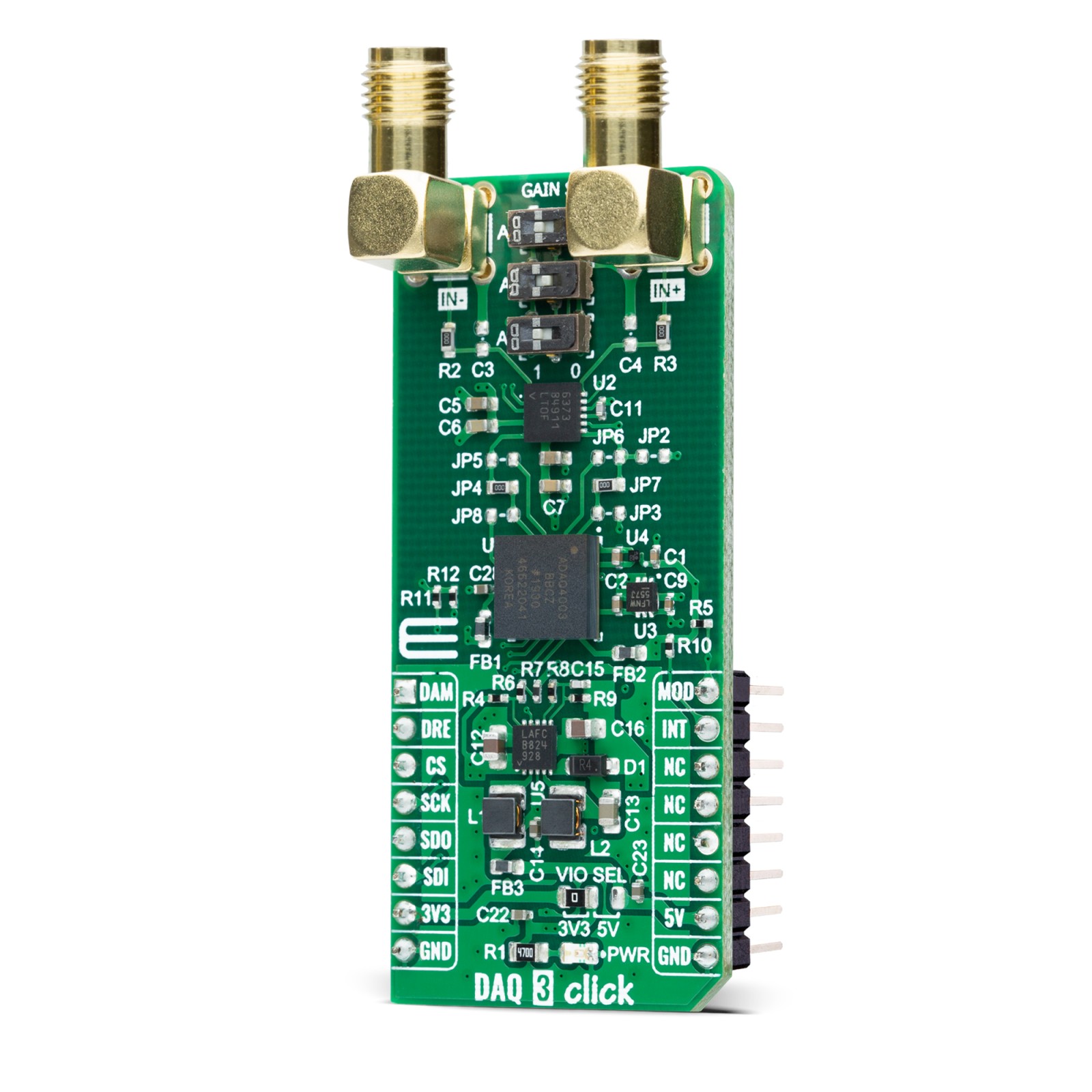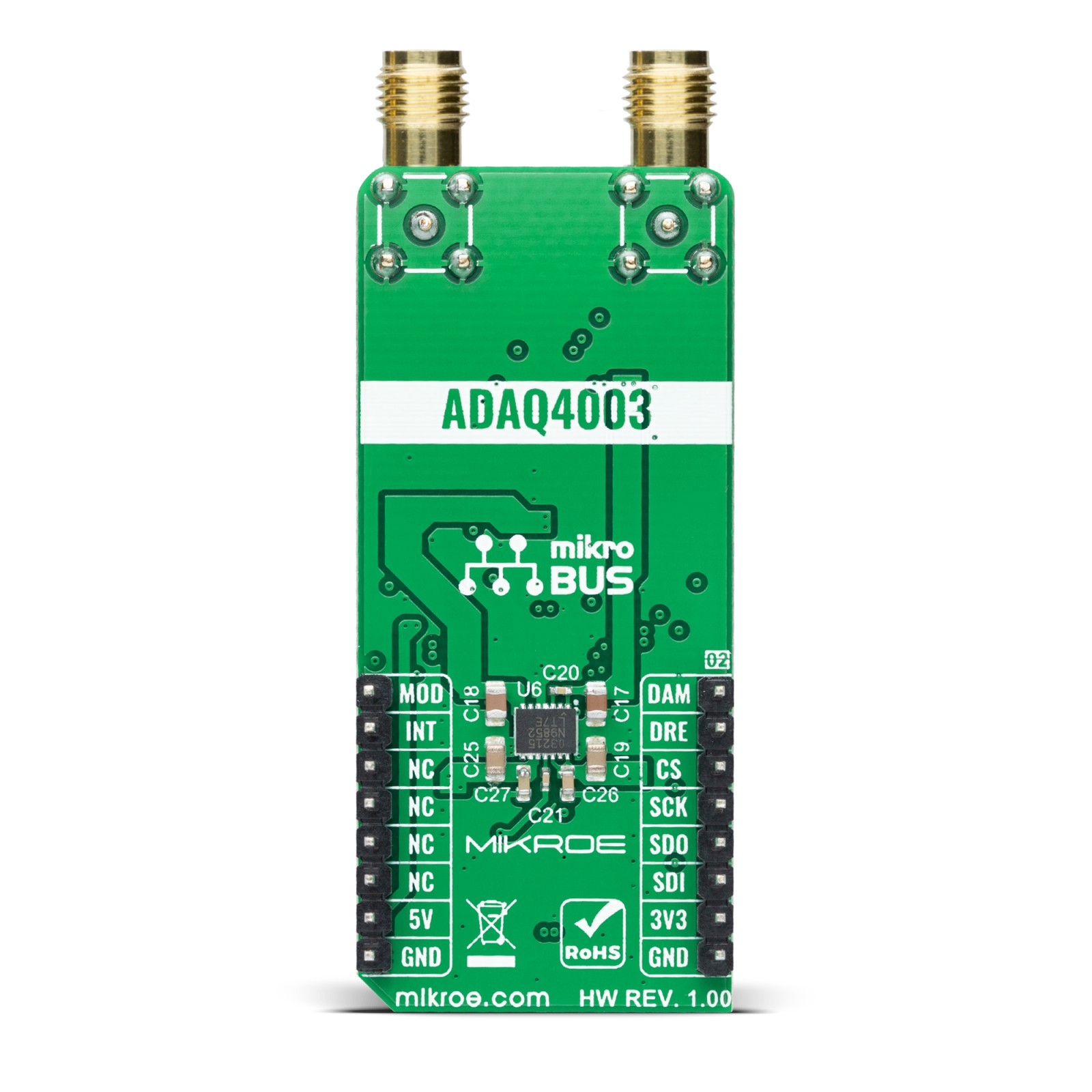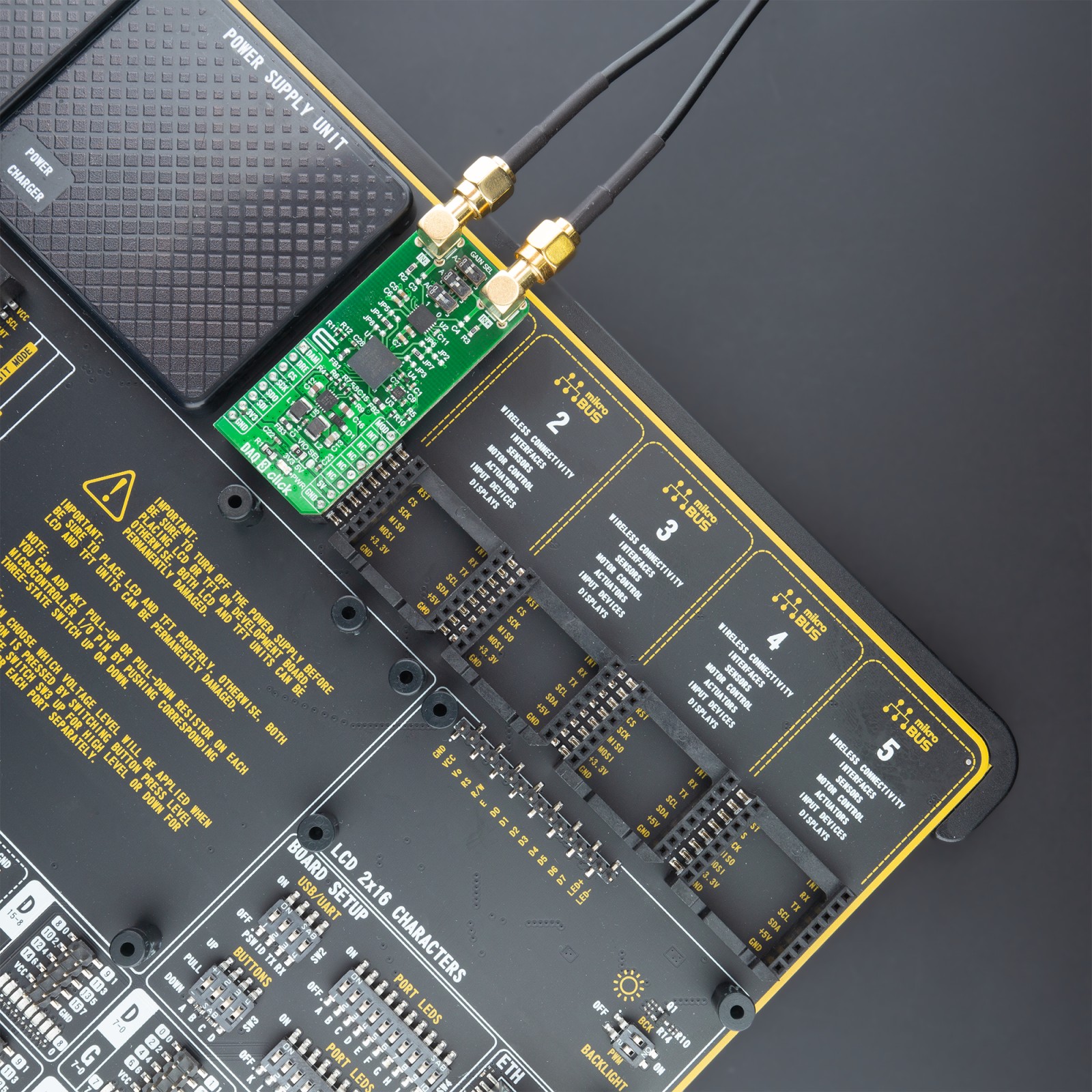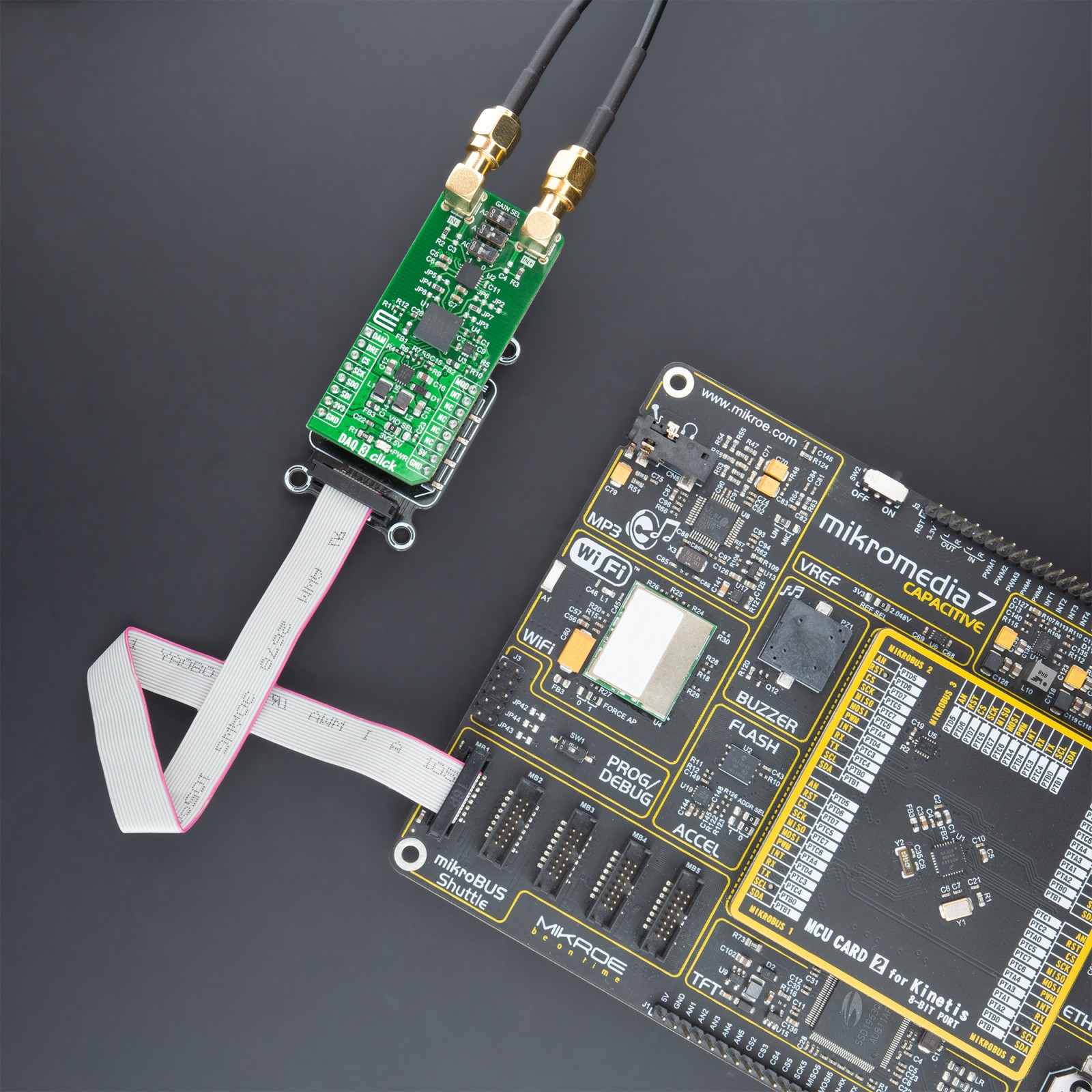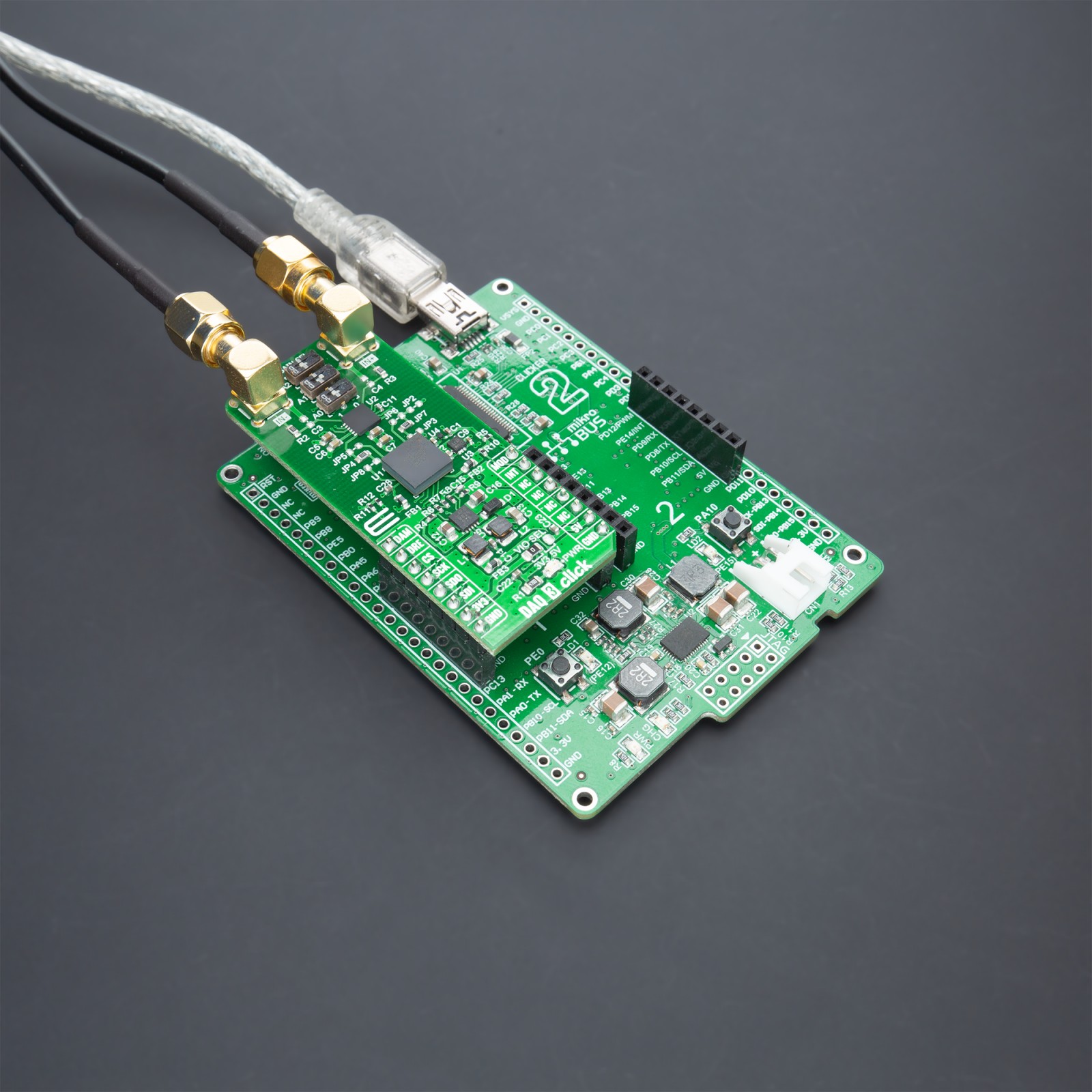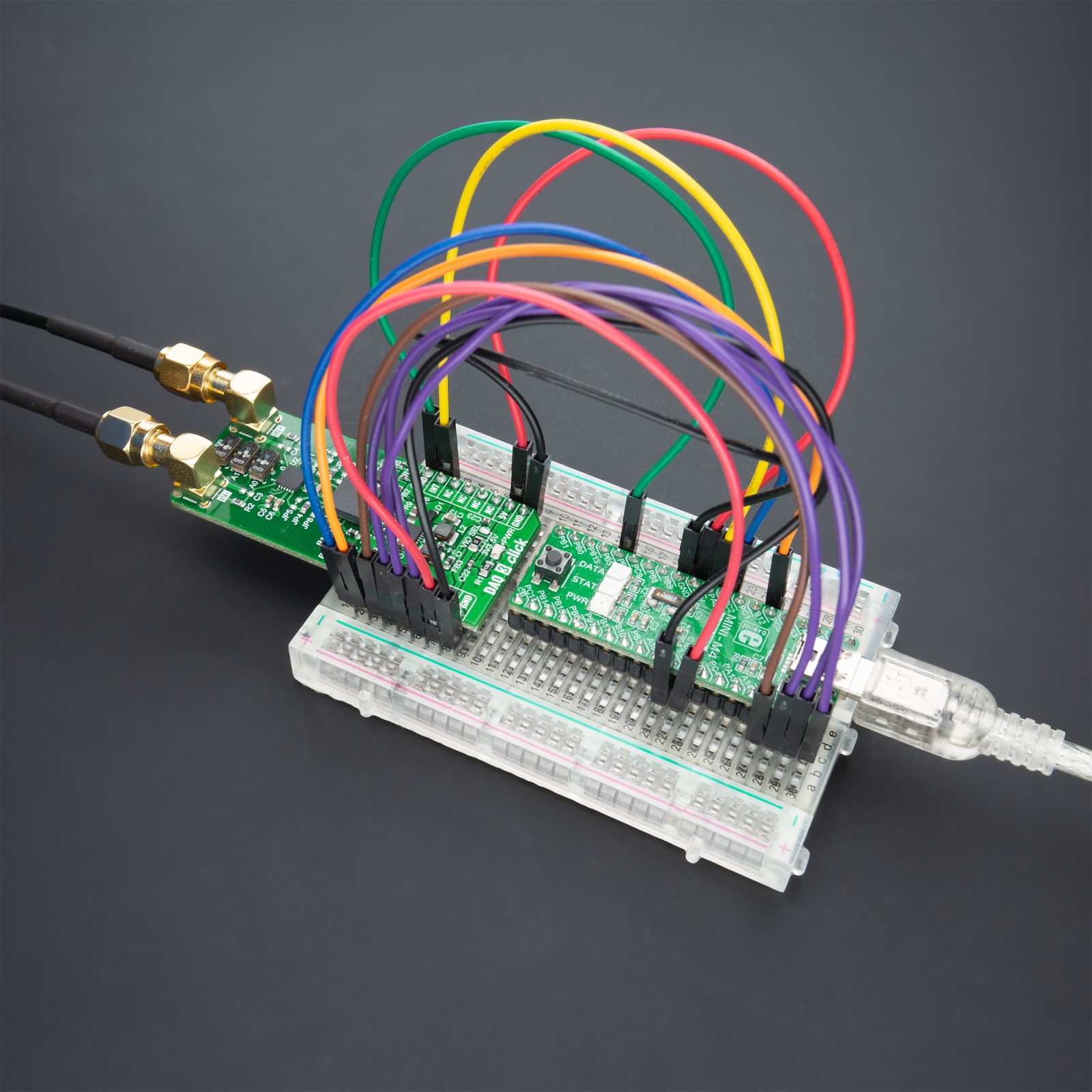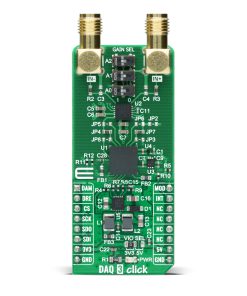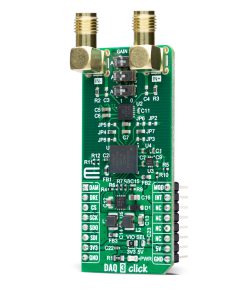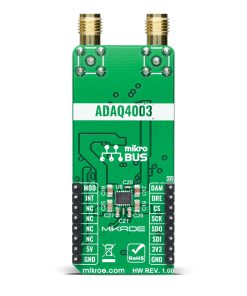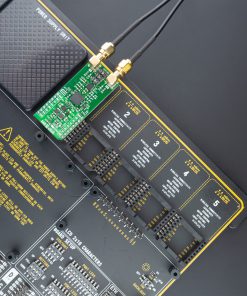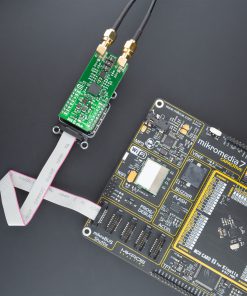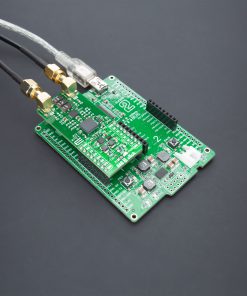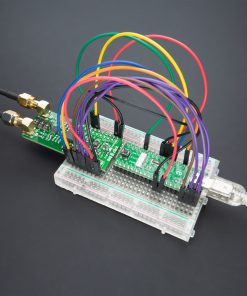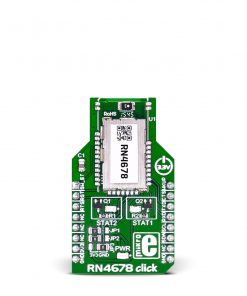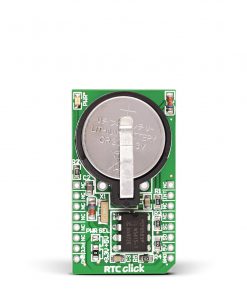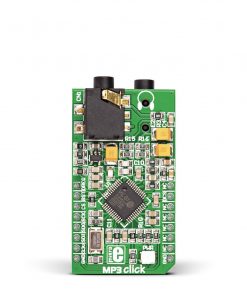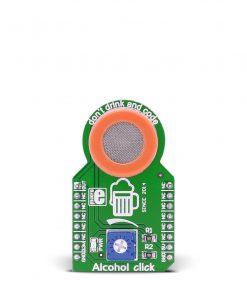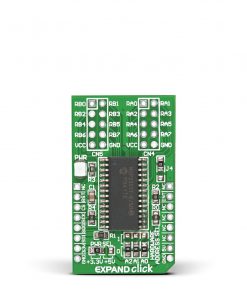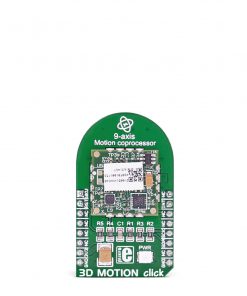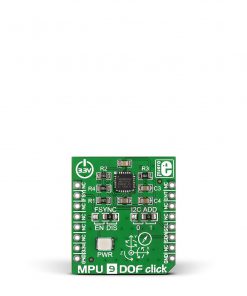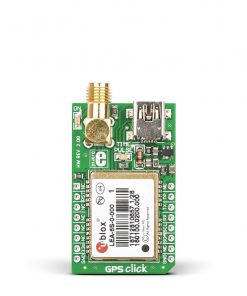DAQ 3 Click
R1,650.00 ex. VAT
DAQ 3 Click is a compact add-on board representing a precision data acquisition solution. This board features the LTC6373 programmable gain instrumentation amplifier driving ADAQ4003, fast and precise μModule precision data acquisition (DAQ) signal chain combined with power solution from Analog Devices. Using SIP technology, the ADAQ4003 reduces end system component count by combining multiple standard signal processing and conditioning blocks into a single device. These blocks include a high-resolution 18-bit, 2 MSPS successive approximation register ADC, fully differential ADC driver amplifier, and a stable reference buffer along with selectable gain options and the most critical passive components. The ADAQ4003 also incorporates ADI’s proprietary iPassives® precision-matched resistor array that minimizes time and temperature-dependent errors, simplifying system-level calibration. This Click board™ is suitable for process control and machine automation applications, as automatic test equipment, digital control loops, and more.
DAQ 3 Click is supported by a mikroSDK compliant library, which includes functions that simplify software development. This Click board™ comes as a fully tested product, ready to be used on a system equipped with the mikroBUS™ socket.
Stock: Lead-time applicable.
| 5+ | R1,567.50 |
| 10+ | R1,485.00 |
| 15+ | R1,402.50 |
| 20+ | R1,349.70 |

